Case study July 2025
Cushing, OK
UP2
Solar lighting is helping Cushing light its new Tiger Trail safely and affordably—without digging into its web of underground utilities.
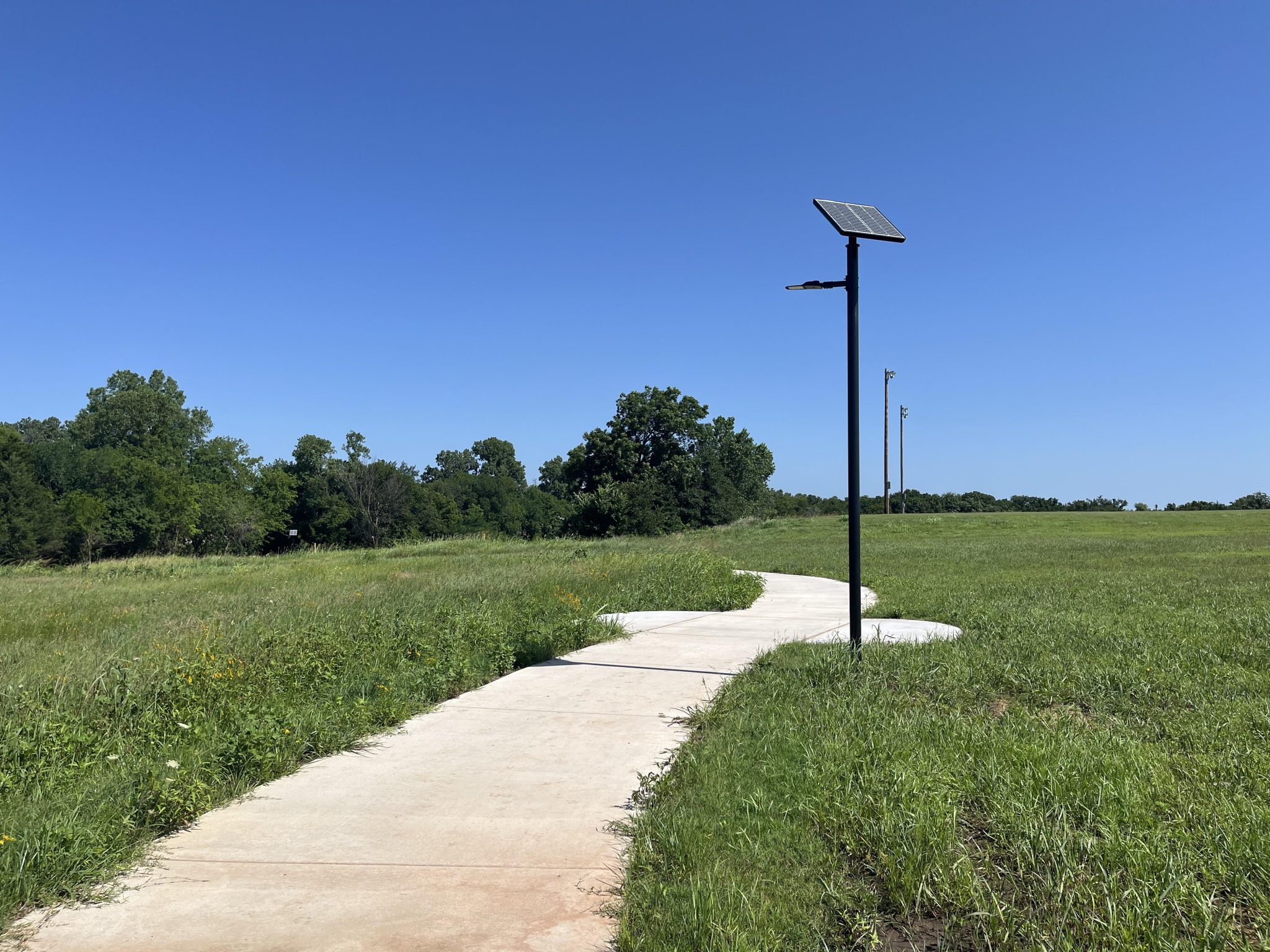
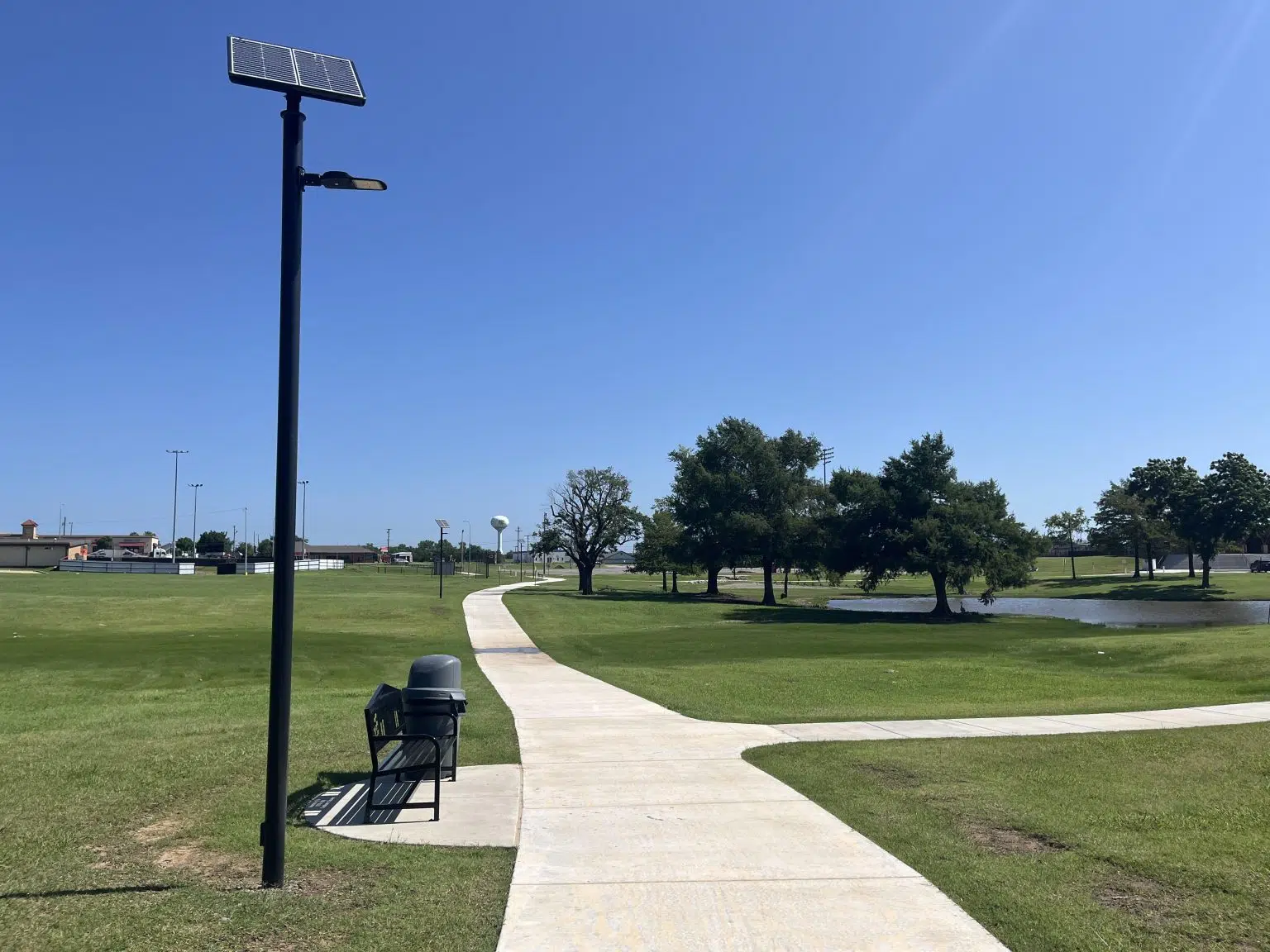
In Cushing, Oklahoma—known as the “Pipeline Crossroads of the World”—a new multi-use path called the Tiger Trail is helping residents safely walk, run, and bike between key community destinations. With two of three phases now complete, the trail connects the city’s elementary, middle, and high schools, with plans to extend access to the town’s sports complex.
While the trail already supports public health and active transportation goals, it also demonstrates how solar lighting can sidestep common infrastructure hurdles. In communities like Cushing where underground utilities are dense and challenging to navigate, solar lighting delivers reliable performance without the need for trenching, wiring, or disruption.
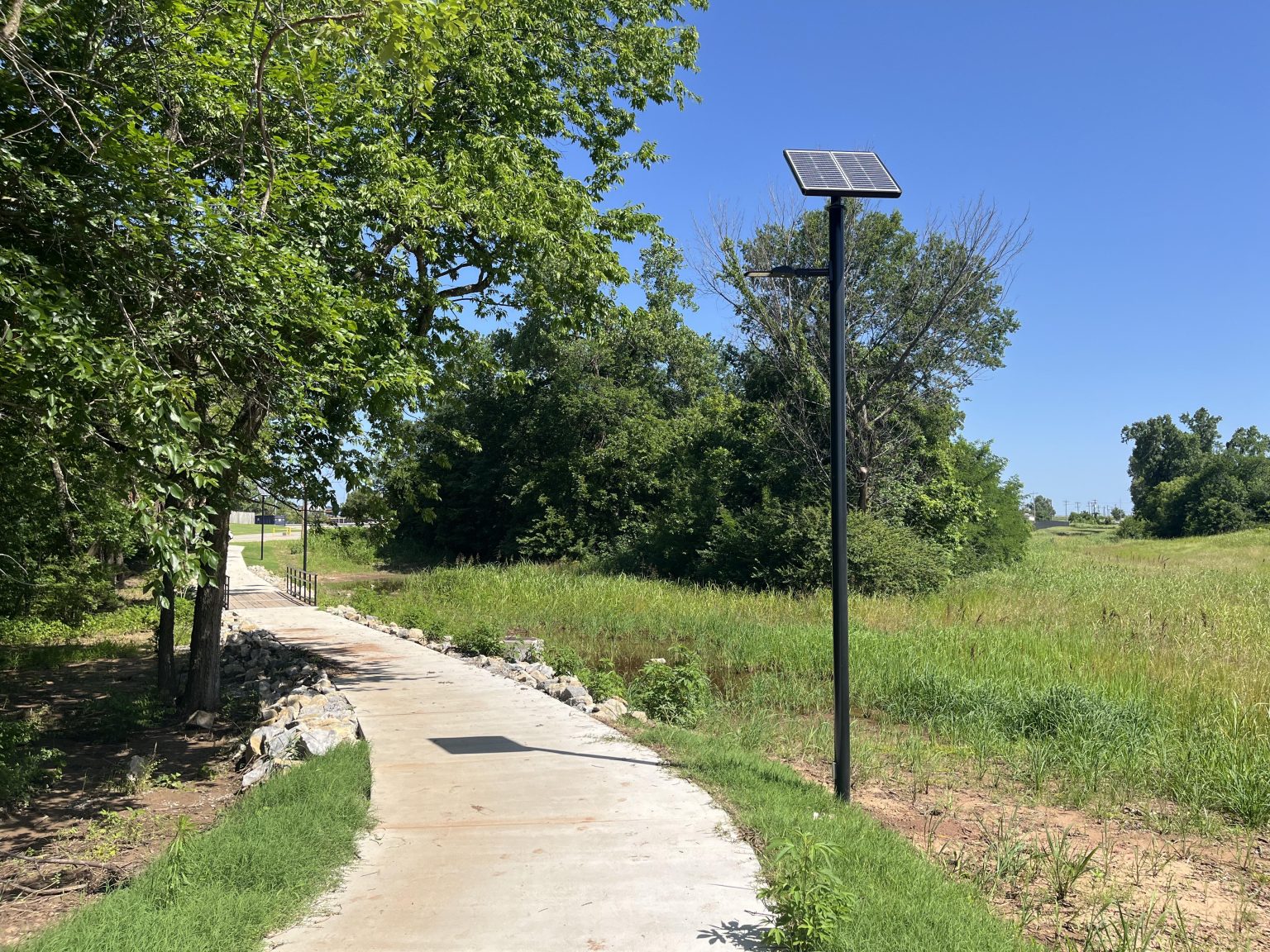
A safer path through an active corridor
The Tiger Trail spans 1.6 miles through a lightly developed area on the edge of town. During the day, it sees steady foot and bike traffic from students, families, and residents, but once the sun sets, the unlit trail can feel secluded—despite evening games at nearby sports fields. Lighting was essential to making the space feel safe and inviting at all hours.
The team initially considered wired lighting but the cost quickly became prohibitive. “We needed to save money—that’s what it boiled down to,” says Brian Patric, a landscape architect at CLS & Associates who worked on the project. “The cost of the wire and conduit outweighed the cost of the solar.”
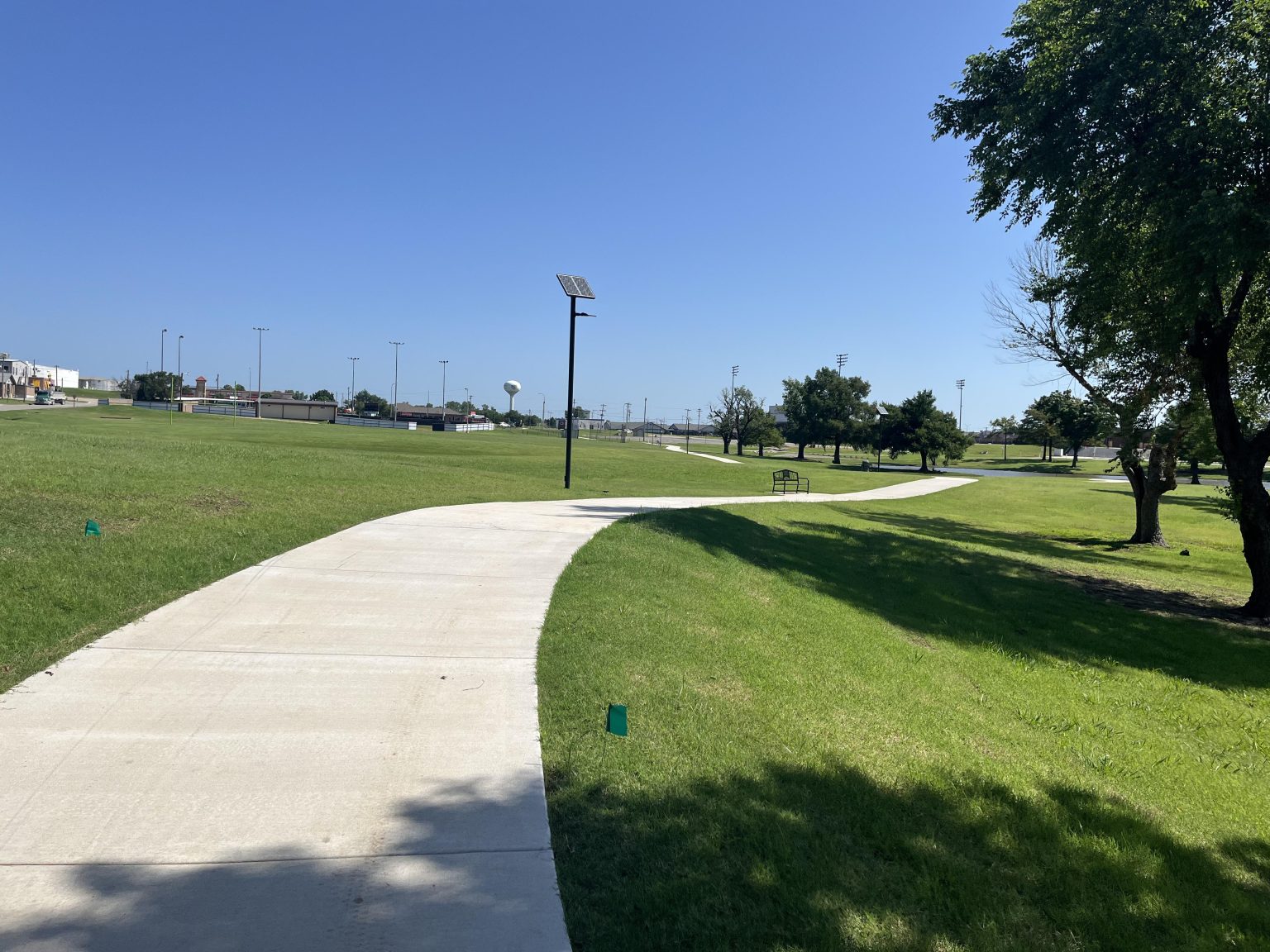
Affordable, adaptable, and easy to install
While previous Sol installations in Eugene utilized concrete foundations with bolt-down poles, this project presented unique challenges. “The project was adjacent to wetlands, and we wanted to minimize the installation risks by specifying direct-bury poles,” explained Jeffryes. The direct-bury approach proved particularly valuable in narrow and environmentally sensitive sections of the path.
Beyond lighting, the project completed in October 2024 included comprehensive path improvements, addressing large cracks and grade breaks caused by ground settling. As cities nationwide seek solutions for urban lighting that balance security needs with sustainability goals, Eugene’s Fern Ridge Path project offers an illuminating example of success.
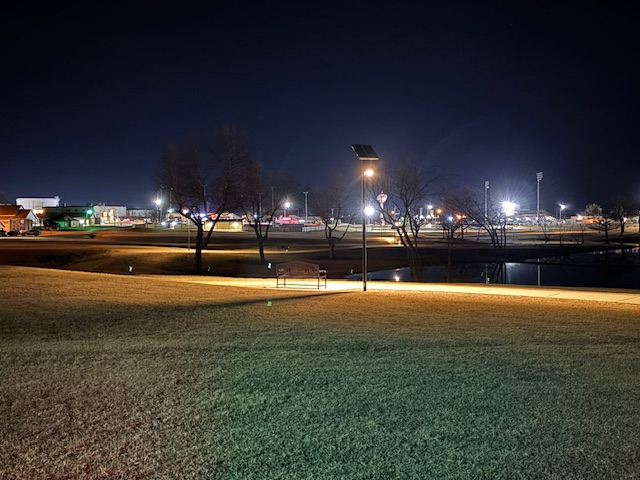
Expanding access, day and night
With solar lighting in place, the Tiger Trail now supports safe, reliable access between schools, neighborhoods, and recreational spaces—no matter the time of day. Residents use the trail for walking, running, and biking after dark, and it’s become a favorite route for community events like 5ks.
As the trail expands to the Cushing Sports Complex, solar lighting will continue to reinforce the city’s investment in active infrastructure. What began as a cost-saving decision has become a model for how small towns can use solar to solve practical challenges and create more connected, usable spaces for the whole community.
